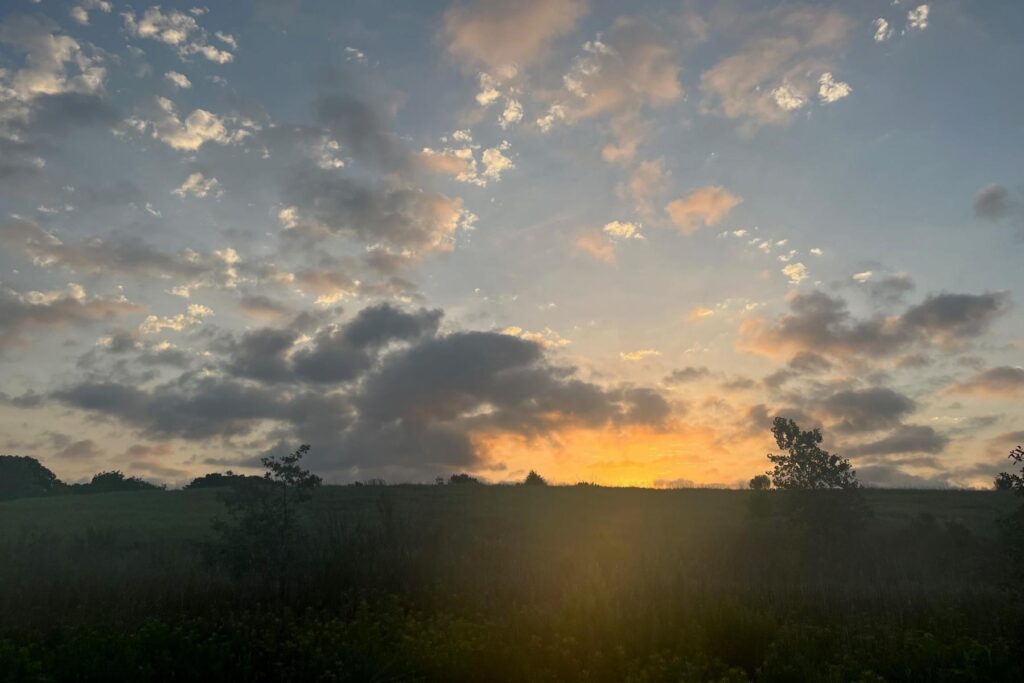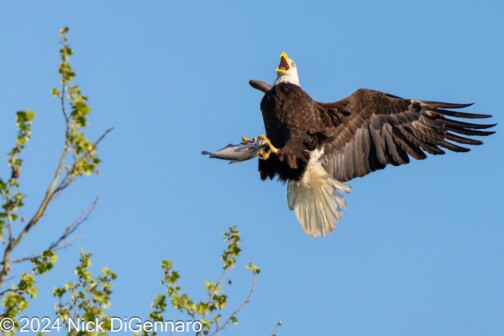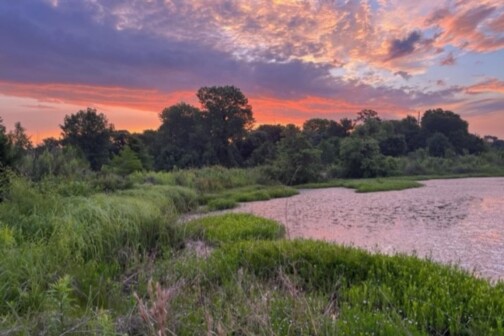It was going to have to be a quick walk last Saturday. I had an important Master Naturalist volunteer event that started at 8:30 (more about that later). So I was happy that Ben and Scott wanted to do an abbreviated trek. We met at 6:30 to walk the AT&T Trail, which is just outside the gates of the Trinity River Audubon Center. I have continued to walk there every morning before work and it has been a great habit. When the shelter in place order hit, I was still coming into my office to handle emergencies. It was extremely stressful, so I decided to start every single day in nature, and I’ve done that for over a year. I’ve walked in rain, fog, mist, sleet, snow, and heat. But I’ve started my days listening to Owls, Whistling Ducks, and the intricate songs of Painted and Indigo Buntings and Dickcissels. I always sit on a bench by the Trinity River and enjoy the quiet. It helps me to relax, if I’m lucky, for the first 30 minutes of my work day.
Ben and I got there a few minutes early, and Ben and I started walking down the trail to watch the sun rise over a hill and to see what was stirring in the early dawn light. We saw multiple Indigo and Painted Buntings. Scott was running a bit behind us and caught up soon. Because we didn’t have a lot of time, we stuck to the paved trail, which we usually eschew. We crossed the pedestrian bridge over the Trinity, pausing to eat some ripe Mulberries that hung from limbs over the trail. We walked to a nice overlook of the river and turned around. Ben pointed out the call of a Northern Parula, a bird I don’t know well. The bird migrates from Southern Mexico and is more common in the eastern United States. We crossed back over the Trinity and heard the unmistakable call of the Pileated Woodpecker. The call was followed by the loud tapping noises made by the tremendous beak of the bird. We followed the sound and saw the bird in the tops of some dead trees, pausing long enough for us to watch it. It’s a magnificent bird. Thankfully the day was overcast so it kept things relatively comfortable.
We made our way back to our cars, and Scott and I left to go to the Master Naturalist volunteer project. As every conscientious group in our city is doing, the North Texas Master Naturalists have formed a DEI task force to move our organization to become a more equitable place. It is one of the more exciting projects, and I’m an enthusiastic supporter. The project is to help maintain a historic cemetery: Campo Santo de Cemento Grande. This small cemetery was created for the large Mexican American community that worked at the Portland Cement plant. Many of these Mexican workers moved north to escape the ravages of the Mexican Revolution. In Dallas they built railroads and later worked in this cement plant, which was responsible for much of the concrete that was used to build this city. Our task was to remove invasive privet plants and to assist in creating a Monarch Butterfly garden, to serve as a way station for another group of migrants: the Monarch Butterflies that travel through here on the way to Canada and then return back in the fall to Mexico. Victoria Ferrell-Ortiz has made a documentary film, Wela, about the cement plant. Some of this history is also mentioned in a 2019 D Magazine article by Roberto José Andrade Franco.
Before we started work in the cemetery, we heard from a number of community members who told us how much the projecct meant to them. The families have worked with very little help for decades and they have a lot of pride in the veterans who are buried there, including Eladio Martinez, who was killed fighting in World War II. We all remarked at what a privilege it was for us to be invited into this sacred place to assist them as they caretake the burial plots of their families.
After working for a few hours, we spread out in the shade and ate lunch together. It was nice to note that cemeteries don’t have to be spooky, scary places. They can be tranquil oases, as this one is. Some day people will come and gather to see the final resting spot of their migrant ancestors, perhaps viewing a migrant Monarch Butterfly that is totally and blissfully unaware of the artificial lines on maps that mark borders.
Author







